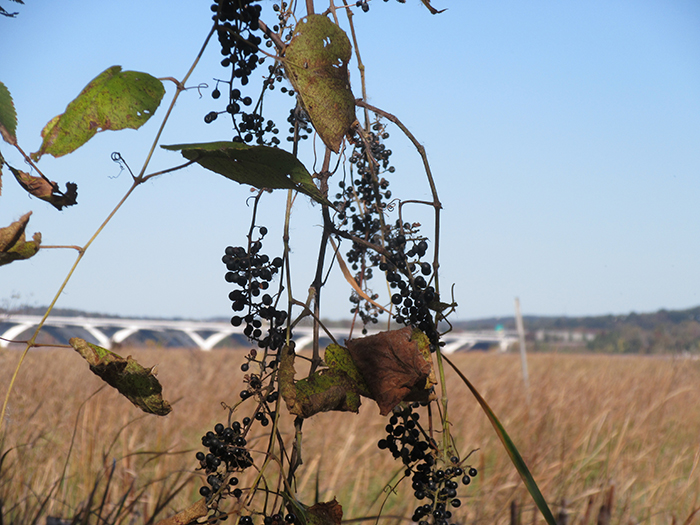Fall Leaves Brighten Dyke Marsh
Dyke Marsh was aflame in color on October 23, 2023, for the annual fall colors walk sponsored by the Friends of Dyke Marsh and the Potowmack Chapter of the Virginia Native Plant Society (VNPS).
| VNPS co-leaders Alan Ford and Margaret Chatham explained the characteristics and needs of many plants in the preserve. |
 |
| All photos by Glenda Booth |
 |
| Bright orangey-red smooth sumac (Rhus glabra) leaves shimmered in the sun and their clusters of crimson berries pointed skyward. |
 |
| The sweetgum (Liquidamber styraciflua) trees’ star-shaped leaves were transitioning from green to yellow to orange to red. |
 |
| Silky dogwood (Cornus amomum) leaves were almost maroon. |
 |
| Climbing, firetruck red Virginia creeper (Parthenocissus quinquefolia) vines seemed to reach for the sun. |
 |
| Co-leader Alan Ford told the group that the poison ivy (Toxicodendron radicans) leaves were “showing off,” turning from green to yellow to deep red. |
 |
| Here, the Virginia creeper’s leaves are red and the poison ivy leaves are yellow. |
 |
| Deep red poison ivy leaves |
 |
| The young thorns of the honey locust (Gleditsia triancanthos) were red too. |
 |
| Fall is also a time for seeds. The narrow-leaf cattails (Typha angustifolia) were releasing seeds to the wind. |
 |
| Dangling river oats’ (Chasmanthium latifolium) seedheads shimmered, resembling little fans. |
 |
| Some blue hues punctuated the green foliage, like the berries of silky dogwoods (Cornus amomum). |
 |
| Frost grape or winter grape (Vitis vulpina), so called as they taste better after a frost. |
 |

 Friends of Dyke Marsh, Inc. is a non-profit 501(c)(3) organization.
Friends of Dyke Marsh, Inc. is a non-profit 501(c)(3) organization.